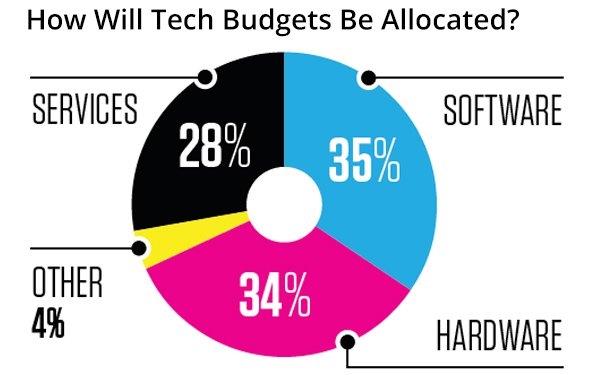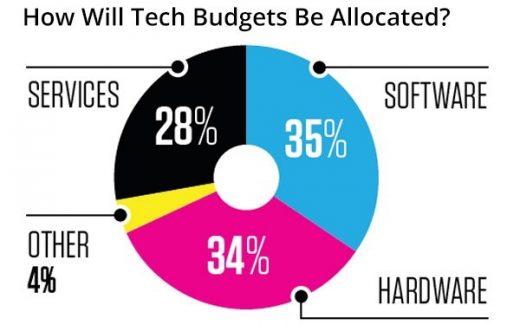How Do Search Marketers Reach Dozens Of People Influencing One Tech Purchase?
How Do Search Marketers Reach Dozens Of People Influencing One Tech Purchase?

Forty-five percent of all IT purchases in 2022 will be made from a new vendor. So how do marketers reach this segment looking for new companies to work with?
IDG Communications, a global data and media and marketing services company, released the findings of its 2022 Role & Influence of the Technology Decision-Maker report.
The research provides insight into the progression of technology in business, as well as an in-depth analysis of who is involved in the IT purchase process and the sources they rely on.
Results are based on 646 respondents to the 35-question survey across multiple industries and countries.
The study found that 90% of IT decision-makers (ITDMs) plan to either increase their technology budgets or hold them during the next 12 months — up from 76% who said the same in 2020.
One of the biggest challenges they face is revealed in the study’s finding that 44% of the nearly 650 global IT participating decision makers do not feel that the vendors and products they work with today meet their needs.
While this is a great opportunity for marketers to find new business, one thing is certain — tech specialists have specific requirements.
Spending plans are most aggressive in high-tech, where two-thirds plan to increase spending, followed closely by telecom and retail/wholesale/distribution.
Just 29% of educational institutions expect to spend more. The median planned budget increase across all respondents is 15%.
Software is the category that will see the biggest leap, with 52% of respondents planning to increase investments there, compared with 43% in hardware and 50% in services.
Mobile and web applications are the largest category of new purchases, with 45% of those acquisitions being additive. Internet of things (IoT) devices, data analytics, and enterprise SaaS and non-SaaS software are close behind. The technologies most likely to be replaced are in mature categories like telecom and networking.
Respondents were split over the factors driving IT strategy, with one-third saying they seek to maintain the status quo, another one-third citing response to internal events, and 29% pointing to external influences.
Those factors were nearly unchanged from 2020. The internal event that drives technology purchases the most is overwhelmingly process change, followed by reorganizations and the need to compensate for internal skill shortages.
For search marketers marketing to these individuals, it’s important to know that the average number of individuals who influence a tech purchase is 20 — 10 IT and 10 line-of-business managers.
On average, 24 individuals are involved in cloud purchases — 13 IT professionals and 11 line-of-business managers, but only 16 when it comes to desktop and laptop purchases –7 IT managers and 9 line-of-business managers. Then there are the CIO and top IT executives.
IDG also found that 76% of IT professionals spend more time searching and consuming content from well-known and trusted brands because they are confident their time will be well spent on these sources.
On average, they download six pieces of content to help them in the purchase process. Some 51% rely on technology content sites to enhance working knowledge.
Other top information sources include white papers, at 45%; webcasts/webinars, at 39%; and technology vendors via phone, email or video conference, at 39%.
Vendor awareness impacts the decision to engage with that brand’s content — specifically when it comes to product reviews, 71%; and case studies, 56%.
Video content — in the context of learning about products for business purposes — comes in at 96%. Professionals are likely to watch in-depth product reviews, at 46%, followed by industry research/tech analyst reports at 41% and how-to videos at 41%.
(28)


